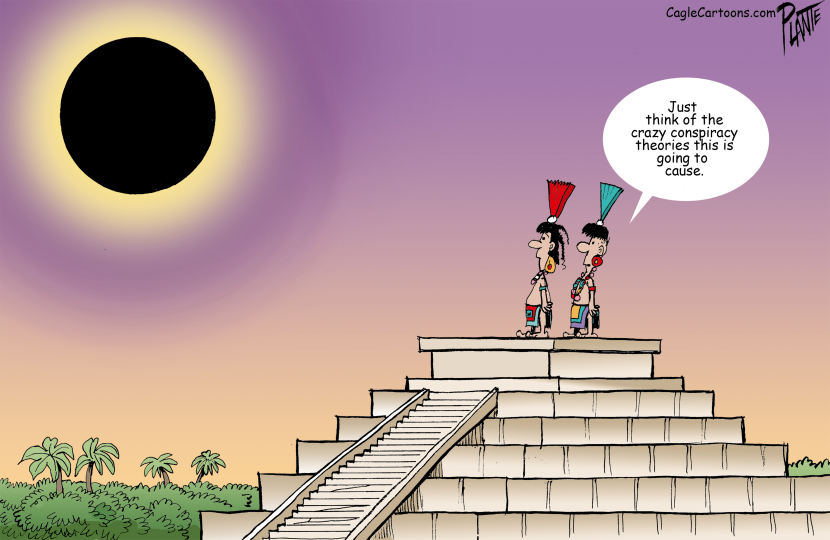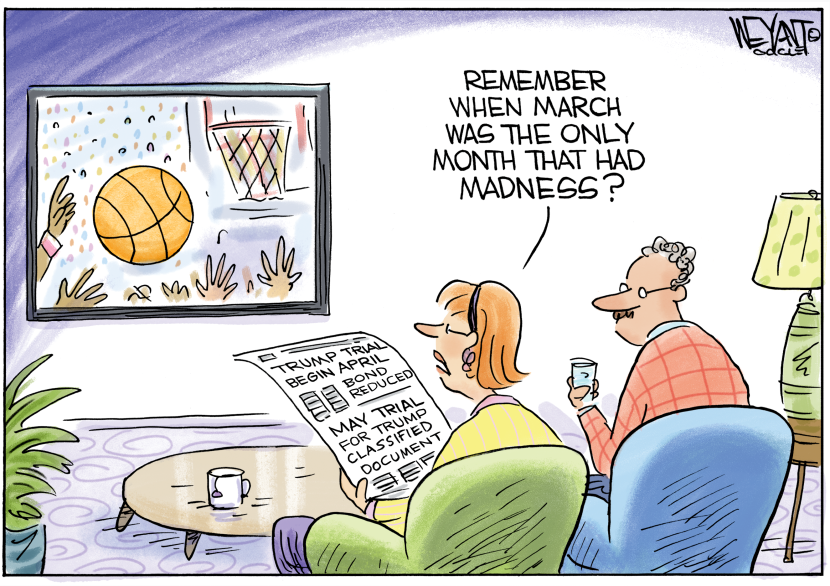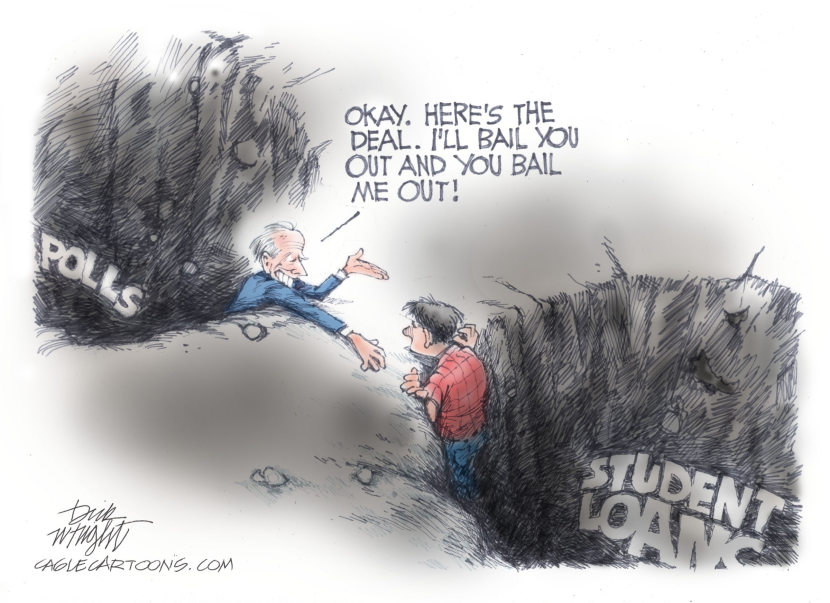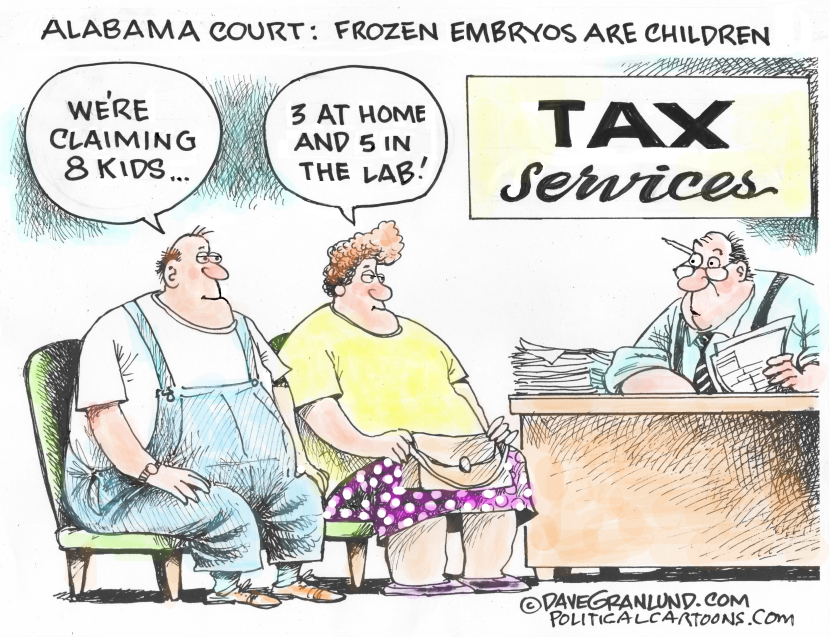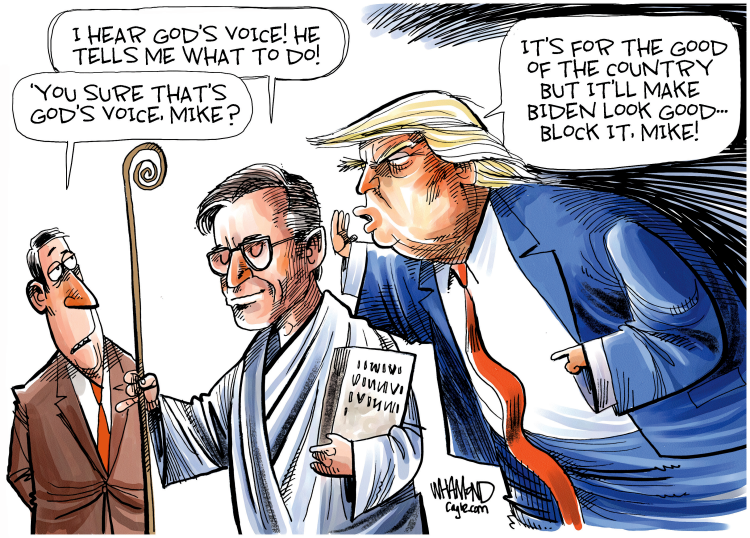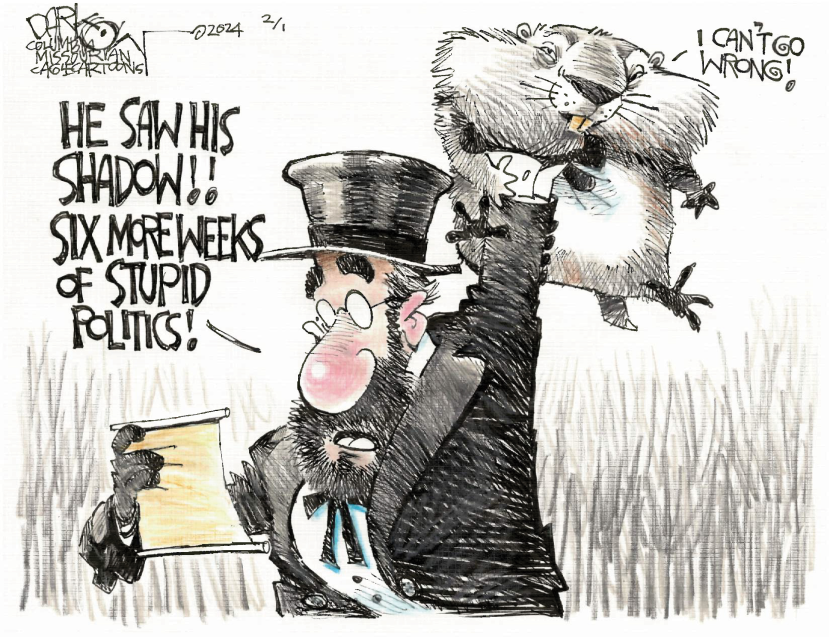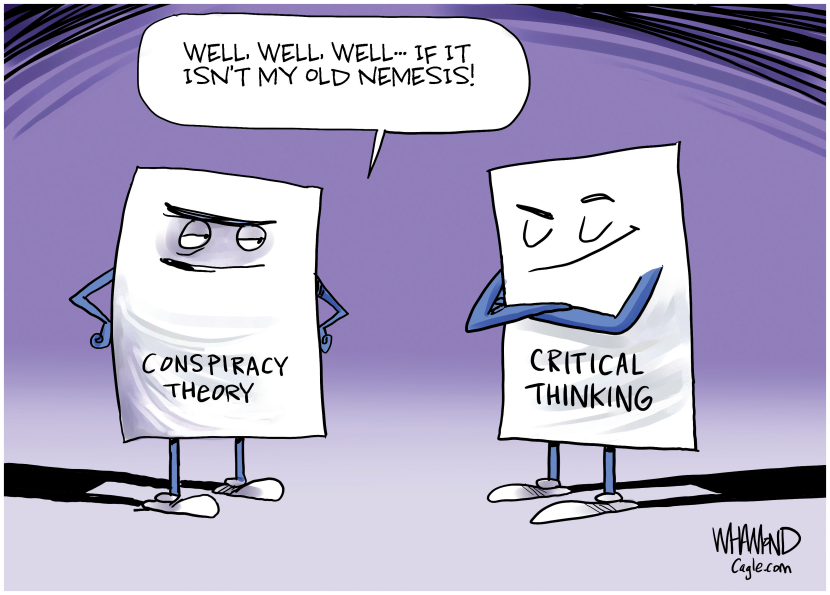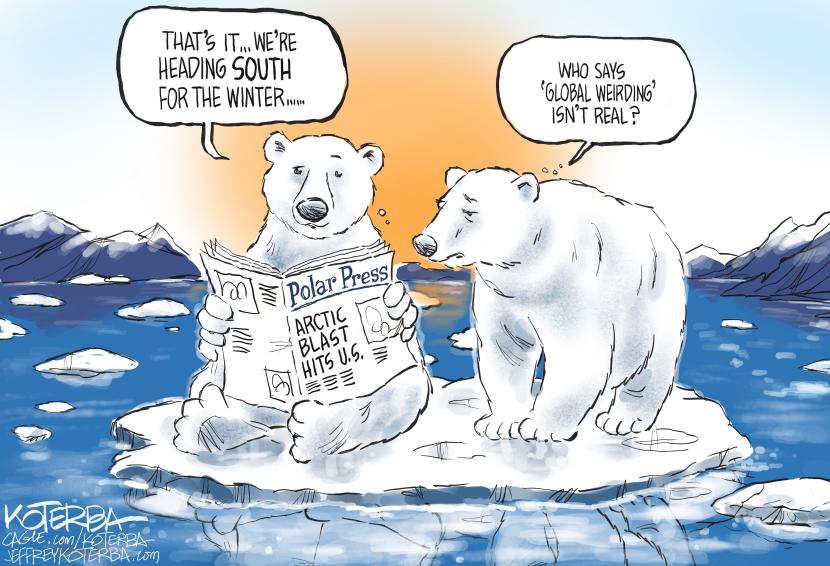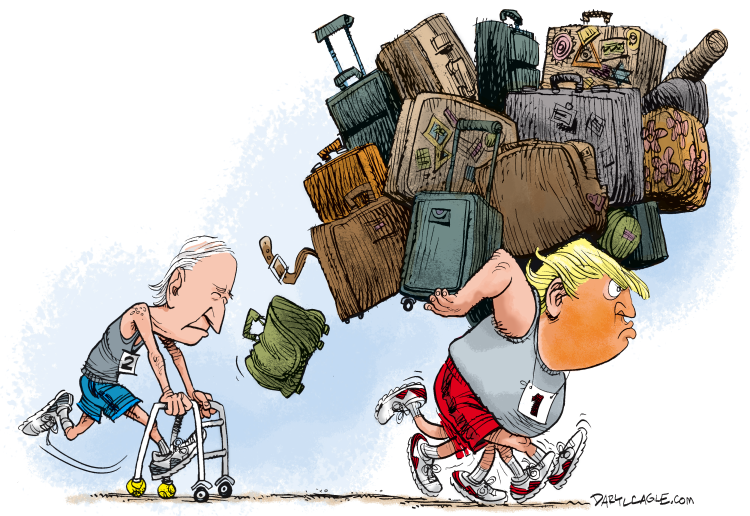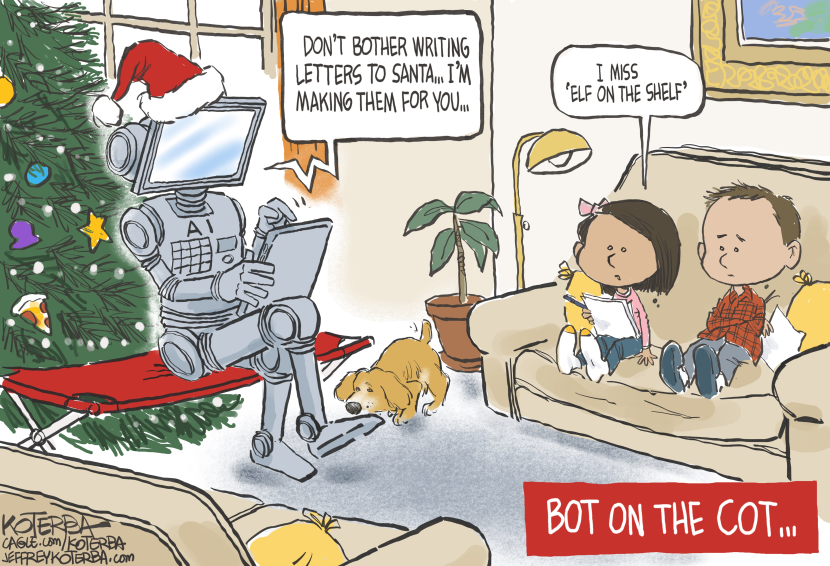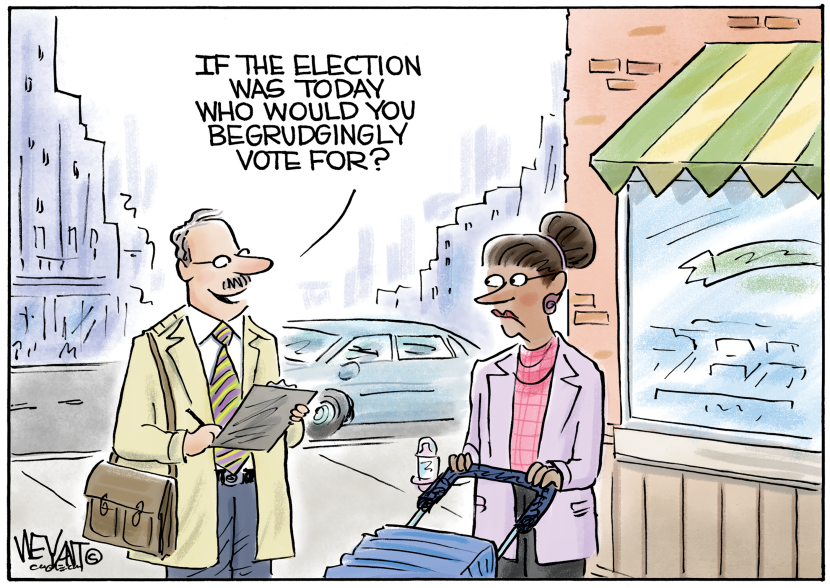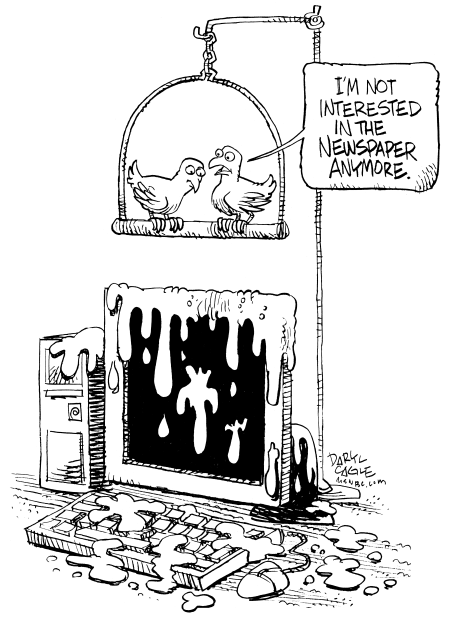The World Press Cartoon contest just announced their winners. This contest is run from Portugal and has the biggest prizes, putting it at the top of the heap for world cartoon contests. I’m pleased that the grand prize winner this year is Shankar Parmathy, a brilliant, young caricaturist in Hyderabad, India. I met Shankar on my speaking tour in India and he contributes cartoons occasionally to Politicalcartoons.com (we need more cartoons from you, Shankar). Here’s Shankar’s lovely, grand prize winning portrait of Nelson Mandela.
Mandela is black, but his fist is pink – a Caucasian fist; I’m not quite sure what Shankar means by that, but it shows diversity, so I suppose that’s good.
This contest is in three parts, editorial cartoons, humor cartoons and caricatures; one of those division winners wins the grand prize, as Shankar did with his caricature. Often the winners are incomprehensible to an American eye. One year the winner was a depiction of the EU as the tower of Babel from an old painting – I had to have it explained to me – I didn’t know the old painting and I didn’t understand the EU reference. Caricature winners are sometimes soccer players that an American would never recognize. Even when I understand these winning cartoons, they can be strange. Here is this year’s humor category winner, by Agim Sulaj, an artist from Albania.
This could be a photo of a sculpture, but I’d guess it is a realistic painting of a loaf of bread with a drawer containing coins. I suppose that’s funny. Nobody’s going to look there for your money, kind of like those fake rocks where you can hide your keys. Maybe it’s a “can’t have your bread and eat it too” cartoon, because you spent your money for the bread, but you’re keeping it too – but you can’t eat the bread, because it’s really a drawer. Maybe.
The editorial cartoon category winner, by cartoonist Zarko Luetic of Croatia, shows a banker greeting a guy with the European Union logo on his suit, with someone who is poor (indicated by patches on his gray unitard) who is being flung into the air by a casual flip of the hat from the EU guy, who is greeting the banker back.
As I read this one, the bankers and the European Union are are so unaware of the plight of the poor that they don’t even notice that they are flinging the poor around as they show, in contrast, that they are aware of each other by greeting each other. And they cast long shadows.
Alternatively, the banker may be noticing that the poor guy in the unitard is flying by, just about to steal the EU guy’s hat – the EU isn’t aware that his hat is about to be stolen by that darn, flying poor guy, but the EU will know in just a second what the banker already knows. The shadow shows us the poor guy is really there, not a figment of their imaginations. I guess that’s OK. Those darn poor are always demanding our attention, when we’d rather greet our powerful friends.
I think that’s right.

